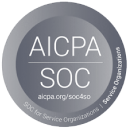This article is for fraud investigators, analysts, and compliance professionals looking to understand how real-time collaboration tools like Salv Bridge are transforming APP fraud investigations.
Key takeaways
- Traditional fraud investigations rely on SWIFT, email, and personal networks — all slow and inconsistent.
- Salv Bridge enables real-time communication between institutions, with structured templates and compliance built in.
- Institutions using Bridge report recovering or preventing around half of APP fraud losses.
- Templates reduce friction, speed up response times, and ensure the right level of information is shared securely.
- Salv Bridge acts as a trusted network — reducing stress, increasing recovery rates, and improving daily workflows.
You’ve just sat down at your desk when an internal alert pops up on your screen. A panicked customer has reported a suspicious payment from their account.
Perhaps the customer was tricked into giving up their details last night, when they were tired and trying to finish up a long day’s work.
As a fraud investigator, the case is passed to you. How does your day unfold?
The answer depends on the tools available to you, so let’s consider two versions of how your day might go.
First, the way it typically works — when collaboration with other financial institutions means emails, calls, and crossed fingers.
Then, what changes when a modern collaboration solution like Salv Bridge is in place.
Everything here is drawn from real-world experience and customer feedback. Some names are fictional, but the fraud investigation workflows are real.
Without collaboration tools: a typical fraud investigation workflow
If you don’t have an easy way to speak to other fincrime teams, then you’ll be scrambling to catch up.
Internal handovers clash with external SWIFT messages and slow legal escalations — a common breakdown in cross-bank fraud investigation.
By the time you’ve worked your way through the process, any confirmation from another bank that they have the stolen funds will be too late. The money is likely to have already vanished through multiple accounts.
“We send the recall. We block the beneficiary… But then it’s fingers crossed and hope for the best.”
Even well-intentioned attempts to share information quickly can get tangled in delays or red tape.
Perhaps your case involves a large neobank — in which case you may have to go through national regulators to send a request.
One analyst we spoke to said they often have to contact their local financial intelligence unit (FIU), who then contact their Lithuanian counterparts, who pass the message on to the bank in question.
Response times via SWIFT? One to two weeks.
Your payments or product team might be the gatekeepers of SWIFT, meaning there will be some internal communication and alignment needed before any messages can be sent.
Perhaps you have some contacts who are happy to receive intelligence informally — for example, receiving a fraudulent IBAN. But without structure, this kind of limited and inconsistent sharing can only help so much.
You know you need to move quickly to recover your customer’s money. But you have too little context, too little certainty, and no idea whether the next bank will even respond.
If you’re feeling the pain of slow collaboration with other financial crime teams, get in touch to hear how Salv Bridge can help you across AML sanctions, KYC and fraud prevention.
With Salv Bridge: a modern fraud investigation workflow
With a tool like Bridge, things get much less stressful.
Let’s say a fraudster tricks an Operations Director into entering company banking credentials into a fake login screen.
By the time she calls her bank, fraudsters have used the credentials and money has already gone. Let’s imagine this is your investigation.
This time, instead of SWIFT or email, you open Salv Bridge and discover that FlexPay, the institution who received the stolen funds, is in the Bridge network.
Using a pre-set template, you very quickly share the necessary information: sender and recipient IBAN, transaction date, amount, and a brief explanation of your suspicion. You mark the message urgent.
Within minutes, FlexPay confirms the funds are still in the account and they’re able to freeze them.
One payment is recovered. But the other payment the fraudsters made was sent to Globopay — who, unfortunately, isn’t on the Bridge platform yet. Outreach takes longer and no response is guaranteed.
This is the difference structured intelligence sharing and speed can make.
For FlexPay, the template ensured the right information was sent, without over-disclosing.
For you, it meant fast, confident action.
And for the victim, it meant at least some of their money was saved.
How Salv Bridge improves fraud investigation outcomes
The difference in daily workflow is stark.
With Salv Bridge, fraud investigators don’t have to think about what to send — the template handles that. Teams can see who owns which case and track replies in real time.
Our customer data shows that more than 90 percent of Bridge alerts are true positives. Typical response times are one to two hours.
And when it comes to APP fraud, institutions using Bridge report recovering or preventing around half of the losses — a significant boost, especially in jurisdictions where reimbursement is mandatory.
Investigators go from hoping someone will reply, to knowing who’s responsible and getting an answer back in minutes.
Many teams we spoke to said Salv Bridge acts not just as a tool for action, but as a safety net and insurance policy.
Other use cases for Salv Bridge beyond fraud recovery
While this day-in-the-life story focuses on fraud, Salv Bridge supports broader financial crime investigations and compliance workflows too.
You can use it to automate sanctions RFIs, share suspicious entity alerts, and flag fraudulent IBANs — all of which help to stop financial crime earlier, sometimes even before a payment is made.
Some members now share IBANs flagged by victims themselves, even before a transaction is completed.
Financial institutions are stopping scams pre-emptively: no loss, no refund, no panic.
Part of Bridge’s success comes from its design. Templates simplify the job, notifications keep inboxes manageable, and everything is structured to support speed and compliance.
It’s also designed with legal teams in mind. We provide [legal guidance to help institutions understand how intelligence sharing aligns with GDPR, AML, and payment service laws].(https://salv.com/case-studies/intelligence-sharing-in-financial-crime-guidance/).
As CEO Taavi Tamkivi advises: don’t ask legal teams “Can we share this?”. Instead, show them what’s being shared, how the platform works, and the legal framework behind it.
Why fraud investigators trust the Salv Bridge ecosystem
It helps that investigators trust what they’re seeing. Teams know who they’re dealing with — and over time, as more investigations take place, trust builds naturally.
That trust is part of why response times are so fast, and why messages get prioritised.
Unlike traditional data feeds, where the hit rate can be under one percent, Bridge messages are context-rich and highly accurate — which means they get acted on.
A day in the life of a fraud investigator is never simple. But with Salv Bridge, it’s no longer chaotic and stressful.
Resolving cases is no longer a matter of crossing fingers and hoping for the best.
Instead, investigations are faster, more structured, and more effective — with less guesswork, and more money recovered.
If that sounds like it would be useful, then book some time to speak with us. We’d love to show you how it could make a big difference to your financial crime team.
We’re seeing huge interest from new European markets, banking associations, and global fintechs. Come and see what the fuss is about.
FAQs
How do banks communicate during a fraud investigation?
Traditionally, communication between banks happens via SWIFT messages, emails, or even calls. But this is slow, fragmented, and often reliant on personal contacts. Salv Bridge replaces this with real-time, structured communication: fraud teams can send intelligence securely to other institutions using pre-approved templates that legal teams trust.
Is there a faster way than SWIFT to contact other banks during a scam?
Yes. Salv Bridge enables real-time messaging between participating institutions, with templates that standardise what’s shared and ensure it reaches the right team instantly. Typical response times on the platform are 1–2 hours — far faster than the 1–2 weeks reported with SWIFT-based processes.
How can financial institutions recover APP fraud losses more effectively?
Speed and coordination are critical. With Salv Bridge, teams can act within minutes, rather than days, increasing the likelihood of freezing and recovering funds. The platform gives clarity over who owns each case and provides a compliant structure for sharing the right level of information quickly and securely.
What is Salv Bridge and how does it help with fraud recovery?
Salv Bridge is a secure platform that helps financial institutions collaborate on financial crime cases, including APP fraud recovery, in real time. It removes the friction of traditional methods like SWIFT or email, offers structured templates to simplify requests, and is built with compliance in mind. Institutions using Bridge report recovering or preventing around half of APP fraud losses — a significant improvement compared to legacy processes.
- Key takeaways
- Without collaboration tools: a typical fraud investigation workflow
- With Salv Bridge: a modern fraud investigation workflow
- How Salv Bridge improves fraud investigation outcomes
- Other use cases for Salv Bridge beyond fraud recovery
- Why fraud investigators trust the Salv Bridge ecosystem
- FAQs



